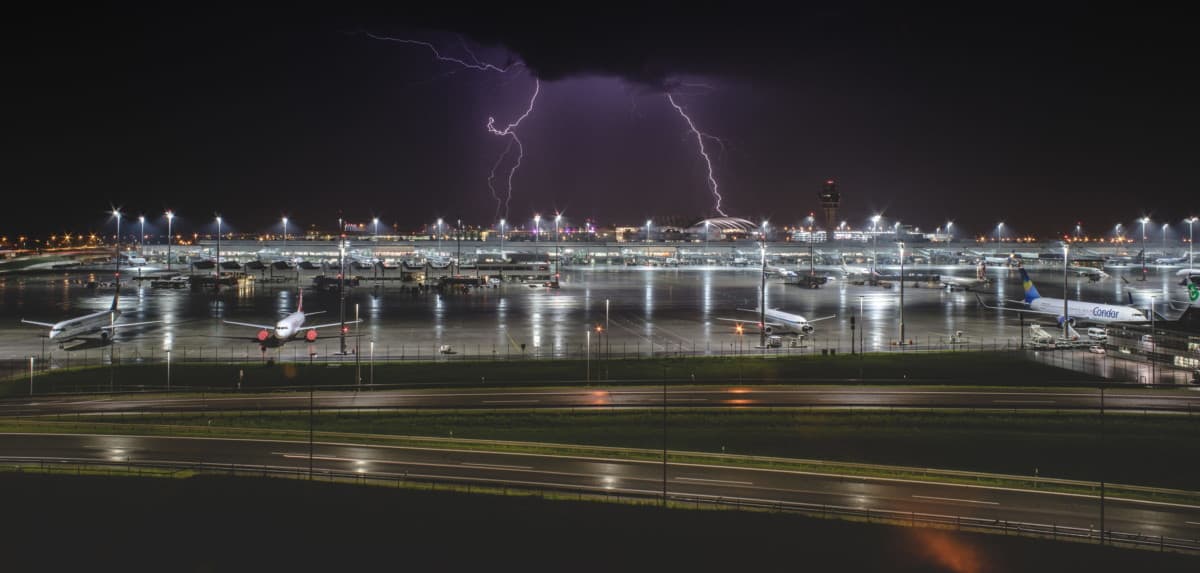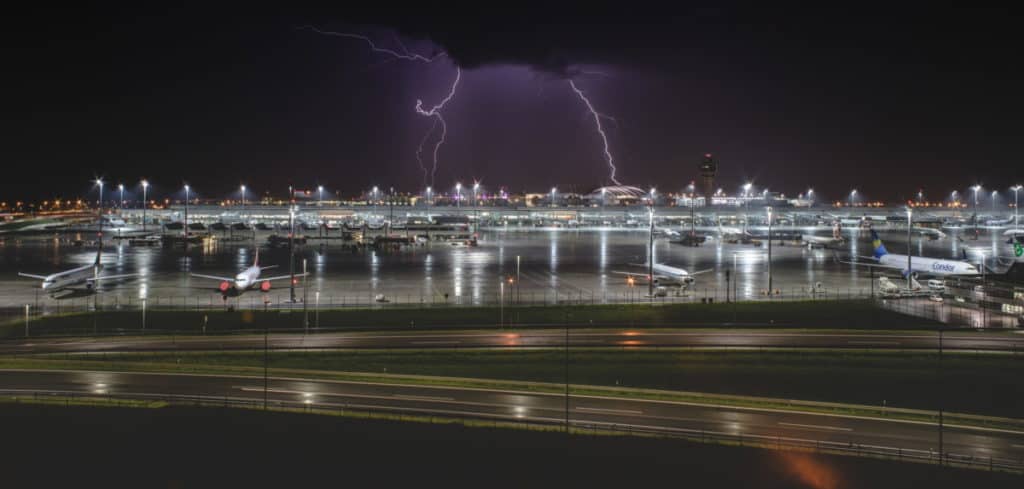
How many times have you been sat waiting for a flight and an announcement has come on explaining there will be a delay due to weather!? Frustrating isn’t it? I too get mad sitting with my fellow passengers in the terminal and that’s with me knowing the reasons behind the delay!
Pilots are allowed to take off in thunderstorms but generally don’t due to the wind shear, high winds, heavy rain, lightning & microbursts these storms can create. Passenger comfort and aircraft safety always come first and airports may temporarily shut down for a ‘Weather Delay’ to let the storm pass.
Even though air traffic control looks after pilots once airborne they cannot prevent a pilot from taking off into the jaws of a thunderstorm. Because of this, many airports use this Weather Delay to temporarily suspend flight operations to help take the decision away from the pilots and the associated pressure to ‘Maintain Schedule’ they can sometimes face from the airline.
To find out more about what happens when a thunderstorm rolls in when a pilot is just about to take off, please keep reading…
Taking Off Into a Thunderstorm
For an airplane to fly it needs air moving over its wings to create lift. If there is insufficient air flowing from nose to tail the wing begins to stall. This may happen on just part of the wing or all of the wing if the loss of airflow is large enough.
With enough stalled area of the wing, the wing begins to lose altitude. If this happens on just one wing the airplane will roll in the direction of the stalled wing, or if both wings begin to stall the whole aircraft begins to descend uncontrollably.
When thunderstorms are present they can create incredibly strong windshears with rapidly changing wind directions that can cause an airplane to stall if the wind direction during takeoff suddenly changes direction just at lift-off.
This is the worst-case scenario as the pilots lift off based on the airplane’s airspeed. An uncommanded roll or sudden drop in altitude caused by wind shear can be catastrophic!
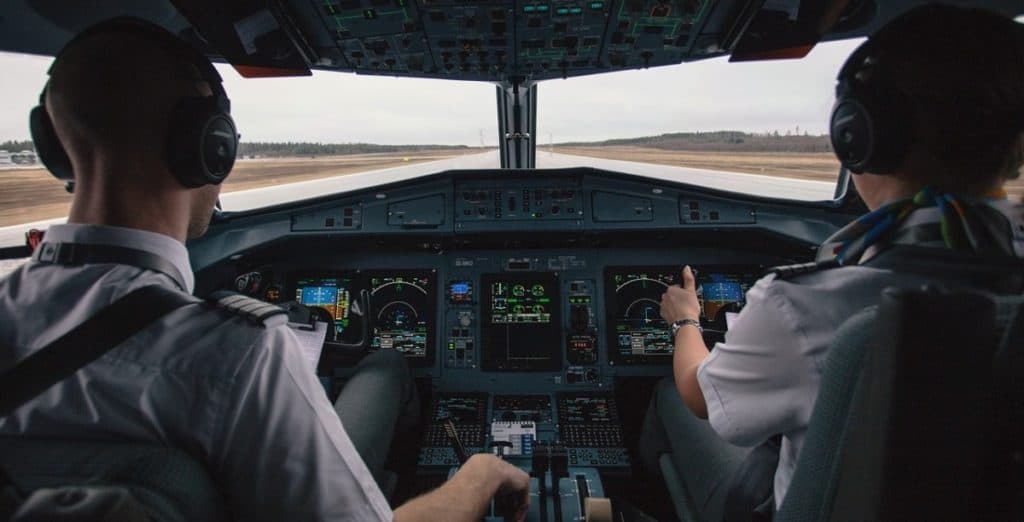
You can feel this partial loss of lift creation when an airplane begins to enter turbulence and encounters wind shear and varying pockets of rising and descending air – It’s not comfortable and in some cases downright terrifying!
Anti-stalling systems and ‘stick shakers’ help the pilots identify an impending stall, but most importantly, the vast majority of airliners are fitted with engines that usually can outperform the severity of the wind and downdrafts/updrafts. Catching the pilots off-guard at the wrong moment on takeoff and not having enough time or altitude to correct is where the problems occur.
That finally brings us to the answer then:
A plane can in fact take off and climb through a thunderstorm in a relatively safe manner but not at all in a convenient manner when it comes to passenger comfort!
It is far better to wait out the impending storm cell on the ground than risk the comfort and safety of everyone onboard!
Learn More…
Try These Articles:
* Aviation Weather Information: How do Pilots Get It?
* Why Do Some Airplanes Turn Immediately After Takeoff?
Why Not Just Fly Around the Thunderstorm?
When pilots wish to fly around a thunderstorm this increases the workload of air traffic control. Aircraft flying into and out of airports are controlled into a flow, pilots wishing to leave these flows create more work for the air traffic controllers to keep them separated and safe from one another.
At major airports, the skies around them can be incredibly busy, just the same as a city rush hour. If a large airport has 50 aircraft waiting to land and 50 waiting to takeoff in the next 20 minutes and a storm cell rolls in this would make controlling the aircraft very difficult!
Just like a freeway, airplanes are funneled onto routes or airways in the sky to get them into and out of the airport. This allows the air traffic controllers to get each aircraft spaced evenly apart to maintain separation and to get them to the next point of their routing safely.
Below you can see the flow into and out of Hartsfield-Jackson International Airport in Atlanta. This was taken on a Saturday morning so the flow is VERY quiet!
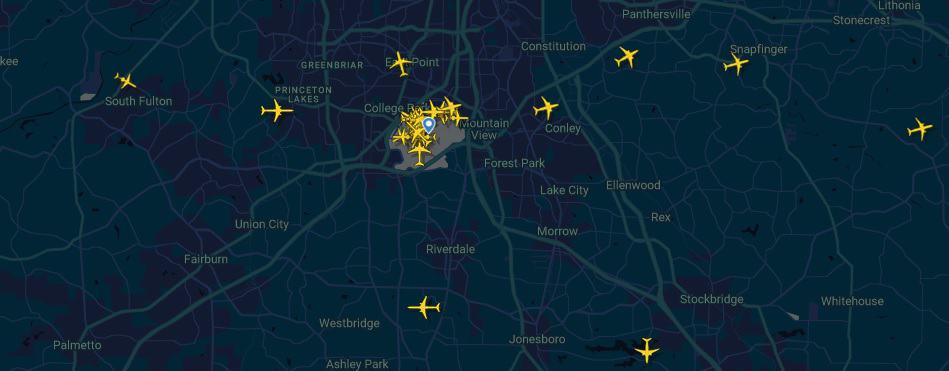
When a thunderstorm rolls in pilots are trained to fly around the storms, but to do so they have to get permission from air traffic control to deviate from their assigned routing. If all of those 100 aircraft mentioned earlier now try requesting this, air traffic control will become chaos.
Think of it like everyone trying to drive around a busy parking lot rather than using the highway. At times it’s complete chaos!
If able, air traffic control will try and set up a new routing for all the inbound traffic to the airport or if unable, may begin holding aircraft at waypoints away from the airport to allow the storm cell to pass.
For those aircraft waiting to takeoff, they will temporarily suspend all takeoffs to help ease the workload on the already busy controllers. This is the weather delay we all moan about when we hear it over the terminal passenger announcement!

Join My Newsletter & Get Great Tips, Information and Experiences To Help You Become a Superb Pilot!
Can Light Aircraft Takeoff Into a Thunderstorm?
Light aircraft cannot withstand the stress imparted on it from a severe thunderstorm so pilots should not take off when a thunderstorm is overhead. Lack of power prevents pilots from maintaining airspeed to prevent the plane from stalling under rapidly changing wind conditions associated with a cell.
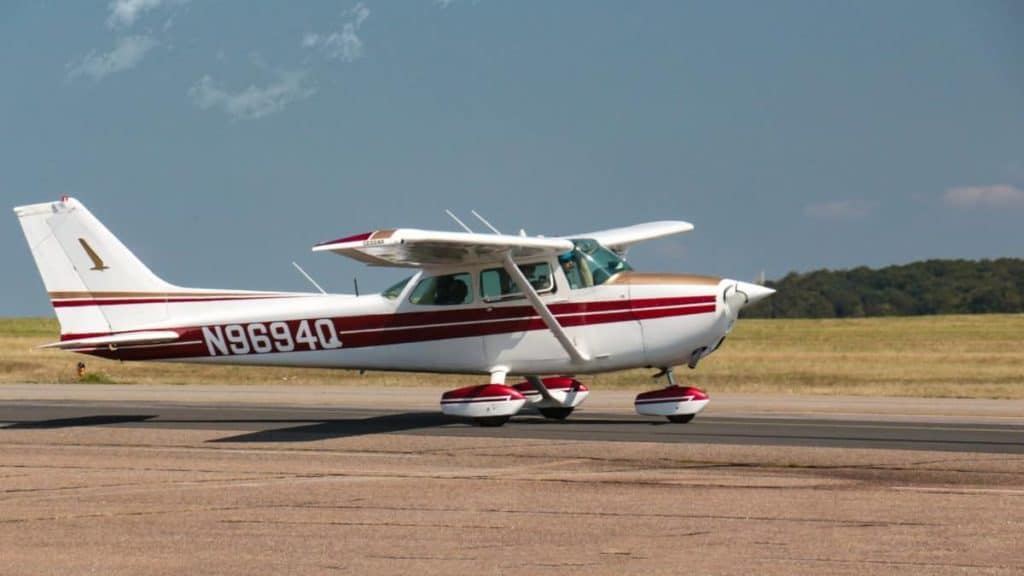
A light aircraft cannot cope with the forces created inside a thunderstorm! They are designed to be relatively fair-weather usage aircraft. Even though some general aviation aircraft are equipped with weather radars and instruments to fly in zero visibility, even anti-icing or deicing systems, they are still not able to climb or even be controlled in a severe thunderstorm.
The biggest factor is the engine performance is not sufficient for what is needed for an aircraft to climb while being forced down by a super strong downdraft of the air. Severe turbulence can flip the aircraft upside down making it impossible to recover. Basically, you would be like a feather in the wind!
There have been cases in the past where light aircraft flew through stormy weather and survived without as much as a scratch, but this is not always the case.
For light aircraft, it is usually prohibited by the aircraft manufacturer and states so in the Aircraft Operating Manual to fly through severe icing and turbulence. Both elements are usually found inside a thunderstorm.
This is why pilots in a light aircraft should not takeoff, however at small, uncontrolled airports pilots can do whatever they wish, even if that means breaking the rules – and yes, it happens alot! Ive seen it with my own eyes!
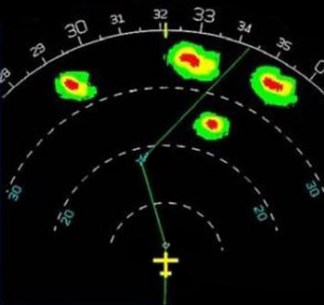
Why Are Thunderstorms Dangerous to Aircraft?
Thunderstorms are dangerous to aircraft for the following reasons:
- Lightning
- Hail
- Heavy Rain
- Windshear
- High Wind
- Updrafts & Downdrafts
- Icing
Thunderstorms are extreme weather phenomena caused by a number of different reasons. Put in a simple way – A warm air mass rapidly gains altitude which causes it to cool down and become unstable to the point that it reaches its dew point and rainfall starts along with lightning due to the electrical discharge.
The most severe and dangerous thunderstorms are the ones caused by cold and warm fronts meeting each other, thus creating squall lines of many kilometers in length and depth sometimes forming an impenetrable wall!
Wind speeds in a thunderstorm can reach up to 60mph (100kph) creating vertical and horizontal wind shears and/or downdrafts or updrafts reaching vertical speeds of up to 5,000 feet per minute. A light aircraft stands no chance of out-climbing that!
Accompany that with strong rainfall that almost zero’s the visibility and lightning between clouds or striking the aircraft and you are in an environment that is not going to be pleasurable!
One major significant factor why pilots try to avoid thunderstorms is the icing caused in them. Icing is a big deal for aircraft as it adversely affects performance.
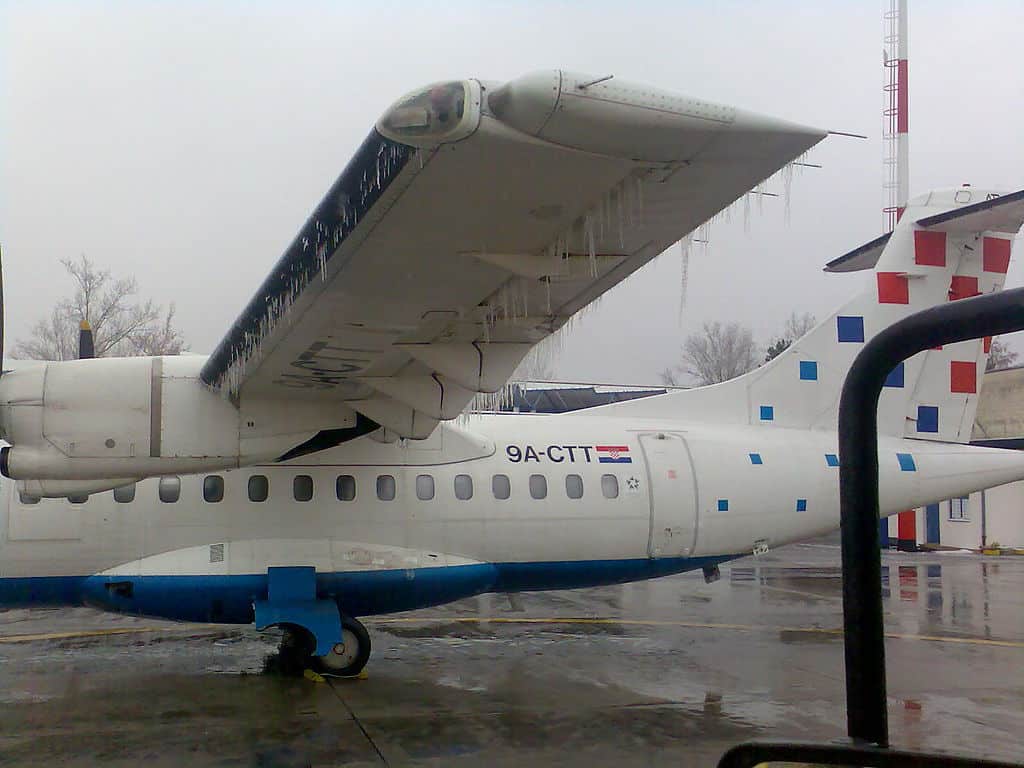
Moisture in a thunderstorm cloud can be suspended in liquid form well below its freezing point. These are known as Super-Cooled Water Droplets.
When an aircraft flies through a thunderstorm these supercooled rain droplets impact the aircraft and instantly freeze on contact. When this accretion is allowed to continue over a long period (Can only take several minutes) it does several things to the aircraft:
- Ice buildup can add significant weight to the aircraft. According to a study done by the National Civil Aviation Agency – Brazil they found that ice can weigh up to 50lbs per square foot on an aircraft. The upper surface area of a larger airliner can collect thousands of pounds of ice!
- Ice affects the smooth airflow over the wings and tailplane due to its rough surface increasing the drag and raising the stall speed of the aircraft.
- The flight controls might become stuck due to icing forming in the cavities between them. In some rare cases, the fuel located in the wing fuel tanks might freeze making it take a slushy form. It is therefore impossible for fuel to flow through the tiny fuel pipes delivering it to the aircraft engines.
Another reason as to why thunderstorms are avoided is the severe turbulence existing inside and up to 10 miles in the perimeter of a cumulonimbus cloud (thunderstorm clouds). Larger commercial aircraft in general are designed to and can fly through turbulence even if it is severe.
The structural integrity of most aircraft will not be affected by severe turbulence but on the other hand, performance will be adversely decreased by the strength of the turbulence. There have been recorded instances where aircraft flew through severe turbulence causing them to lose speed, leading the aircraft eventually to enter a stalled condition.
As recovering from a stall is by itself a demanding maneuver, imagine trying to regain control of the aircraft in a storm with severe turbulence and icing just after lift-off!
This is why pilots generally do not takeoff into a thunderstorm!
Learn More…
Try These Articles:
* How Do Airplanes Handle Lightning Strikes?
* How Do Airplanes Not Freeze?

